
French Knot is also known as
Punto de Nudo Francés [ES], Point de Noeud [FR], Knötchenstich [DE], Punto Nodini [IT], Ponto de Nó Francés[PT], Franska Knutar [SV].
About the French Knot
The French knot is one of the easiest of all knots. Interestingly, however, it is often hailed as one of the most difficult-to-handle or difficult-to-do stitches. This, so much so, that learners often end up hating to do this stitch. It is only a matter of getting the hang of it.
This stitch can be used to do little flowers or as a filling stitch to fill in small circles and the center of flowers. Many closely done French Knots can give a ‘woolly’ appearance and can be used for textures.
How to do the French Knot
You use both the hands to do the French Knot. I strongly recommend that you read the tips at the end of the tutorial to make perfect French Knots.
 |
 |
| Fig 1: Bring the needle out through A. | Fig 2: Now, place the needle close to the fabric. Wrap the thread around it twice, as shown. |
 |
 |
| Fig 3: Keep the longer end of the thread pulled with your fingers while putting the needle back in a point just close to A. This is probably what you have to master.
TIP: If you are holding the needle with your right-hand fingers, wrap the thread and hold it pulled with your left-hand fingers. Vice versa. This makes it easy to put the needle in through the fabric without the risk of pulling out of the wrapped thread. If this seems difficult for you, try this: after wrapping the thread, turn the needle around about 180 degrees and then try to put it near A. |
Fig 4: Pull down the needle through the fabric. You will see your first French Knot formed. |
Tips for making the perfect French Knot
- A Milliner’s needle has the same shaft thickness throughout making the passing of the needle through the wrapping easy. Use it if you have one.
- Do not wrap the thread too tight or too loose, but just tight enough to ensure that the eye of your needle passes smoothly through it.
- Wrap the thread no more than twice around the needle. If you want a thicker knot, use more strands of thread instead of more wraps.
- Do not pass the needle back in through the same stitch point that you came out from, but near it. This ensures your knot does not fall through the hole in the fabric to the other side!
Learn to do French Knots in 2 minutes!
Related Projects
Do you want to know where and how to use this stitch? Check out the projects below and know more! Let’s make something beautiful today ❤️.
Use this stitch on a pattern
Visit and Subscribe to Sarah’s YouTube Channel
Learn French knot and 305 other stitches from our 600-page eBook.
Related Stitches from the Knot Stitch Family
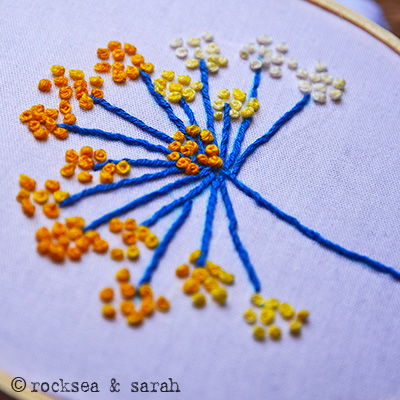


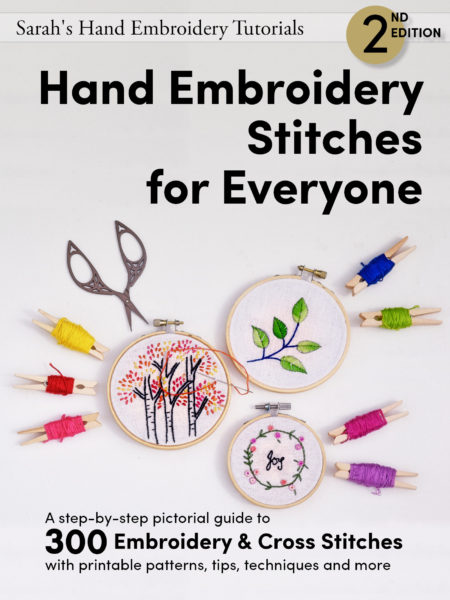
![Punto de nudo francés [ES], Point de noeud [FR], Knötchenstich [DE], Punto nodini [IT], Ponto de nó francés[PT], Franska knutar [SV]](https://www.embroidery.rocksea.org/images/embroidery/french_knot_index_2.jpg)
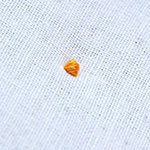
![Figure 8 Knot [EN], Nudo Colonial [ES], Noeud Colonial [FR], Kolonialknotenstich [DE], Punto Coloniale [IT], Ponto Nó Colonial [PT]](https://www.embroidery.rocksea.org/images/embroidery/colonial_knot_index_2.jpg)
![Chinese Knot / Forbidden Stitch / Blind Knot [EN], Nudo de Pekín [ES], Point de noeud de Pékin [FR], Peking-Knotenstich [DE], Ponto de nó de Pequim [PT]](https://www.embroidery.rocksea.org/images/embroidery/peking_index_2.jpg)
![Long French Knot [EN], Puntada de Pistilo [ES], Point de Pistil [FR], Stielstich [DE], Punto Pistillo [IT], Ponto Pistilo [PT]](https://www.embroidery.rocksea.org/images/embroidery/pistil_knot_index_2.jpg)
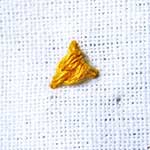
![Bullion stitch, Caterpillar stitch, Coil stitch, Knot stitch, Post stitch, Worm stitch, Puerto Rico rose, Grub knot [EN], Punto rococó / Punto precioso / Barrita de rococó [ES], Point de poste [FR], Wickelstich / Langer Knötchenstich [DE], Punto vapore o punto portico [IT], Ponto canutilho [PT], Förlängd knut [SV]](https://www.embroidery.rocksea.org/images/embroidery/bullion_knot_index_2.jpg)
![Isolated Pearl Knot [EN], Schwertstich [DE]](https://www.embroidery.rocksea.org/images/embroidery/sword_stitch_index_2.jpg)
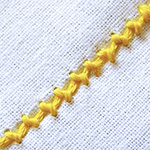
![German knot / Snail trail / Short knot stitch [EN], Puntada coral [ES], Point de corail [FR], Korallenstich [DE], Korall stygn [SV]](https://www.embroidery.rocksea.org/images/embroidery/coral_stitch_index_2.jpg)
![Schneckenstich [DE], Ponto laçadas cruzadas / Ponto concha em espiral [PT]](https://www.embroidery.rocksea.org/images/embroidery/scroll_stitch_index_2.jpg)
![Puntada de diamantes [ES], Point de diamant noué [FR], Ponto de diamante com nó [PT]](https://www.embroidery.rocksea.org/images/embroidery/diamond_knotted_index_2.jpg)
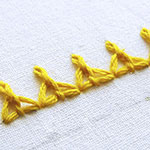
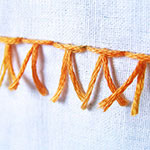
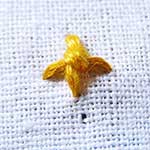
 Sarah has been researching and sharing hand embroidery lessons for over 17 years, making it accessible to everyone around the globe.
Sarah has been researching and sharing hand embroidery lessons for over 17 years, making it accessible to everyone around the globe.
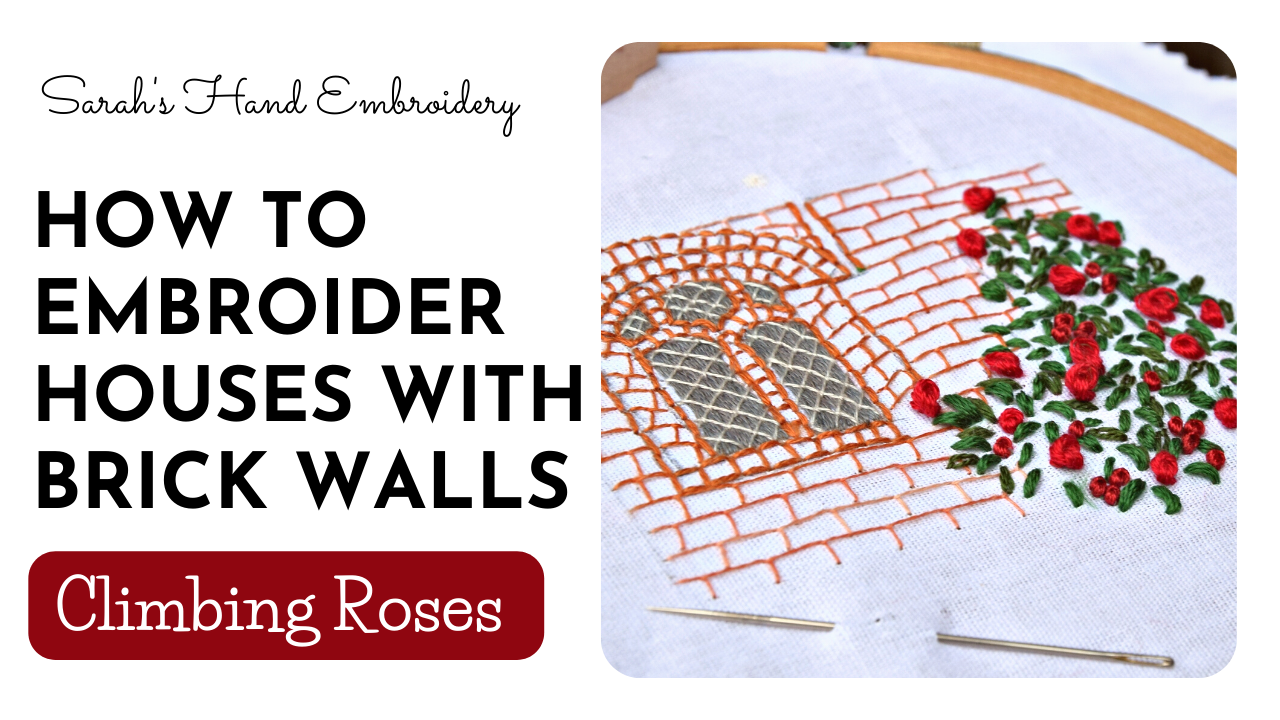
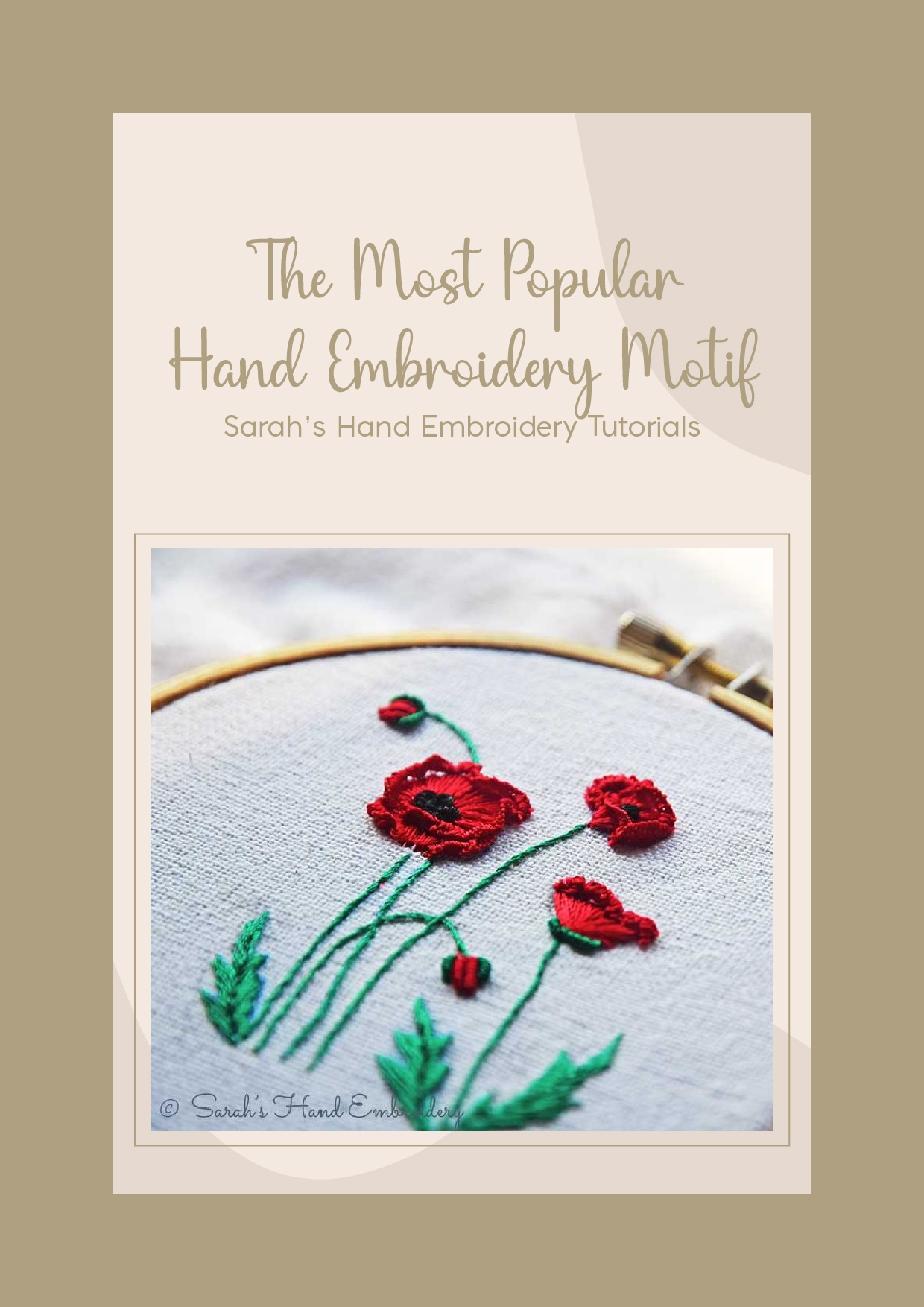
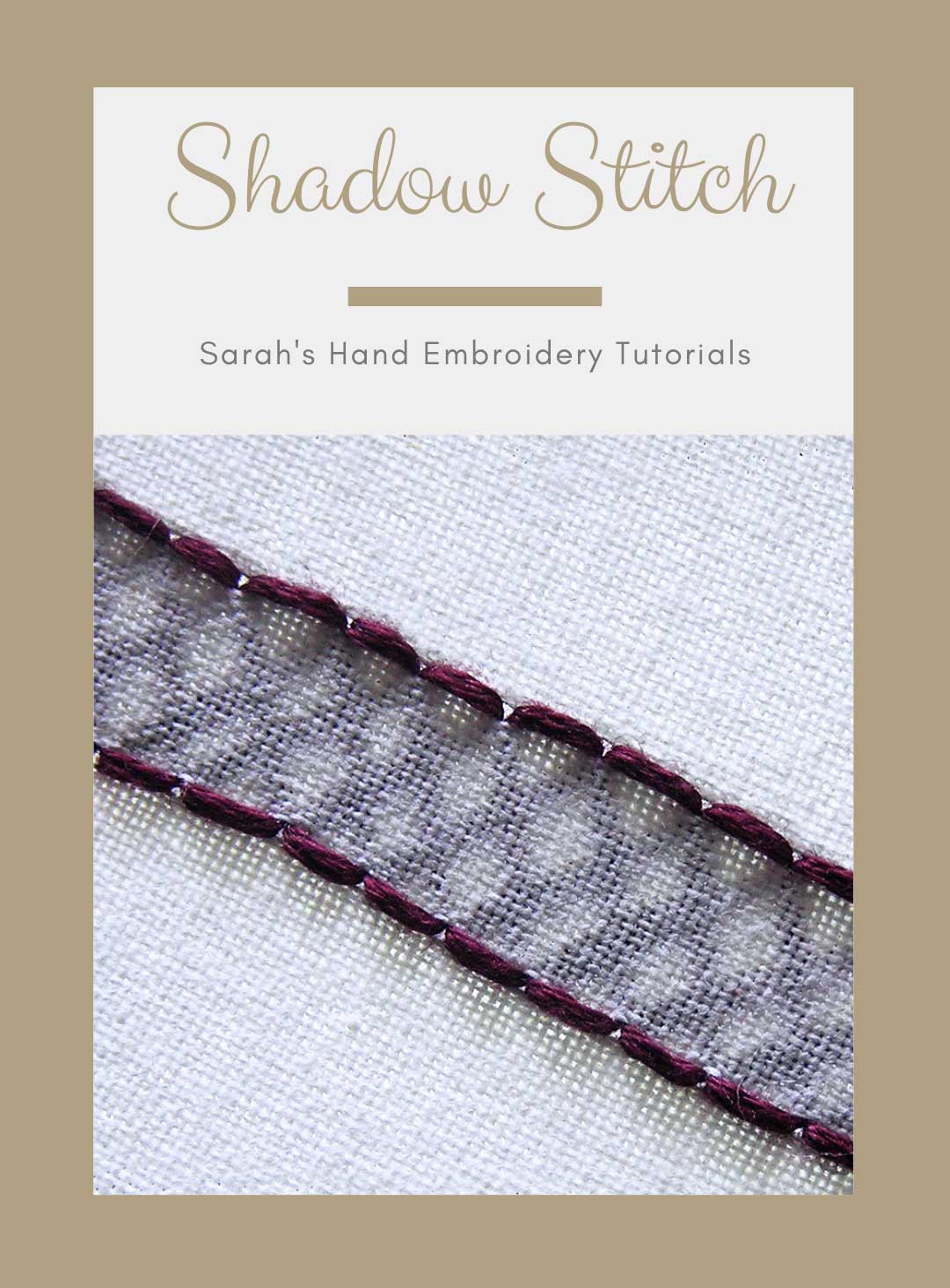


another French Knot

I love this one!
thanks mam
trying French Knot

Thank you for your teaching us to sew , and good description so we can understand well!
Thank you, Seya, for your lovely words.
Hi Sarah! I’m trying to dot my work with French knots to add a little magic to the piece, but am having to trail my thread all over my piece. Is there a way to do isolated knots? Also, how are you tying off/finishing these knots? Thanks for the help and advice!
Hi Katrina,
You can start with a knot, work your french knots and then finish it by making a couple of tiny stitches under the French knot on the back side of the fabric. These couple of stitches are enough to secure the French Knot in place. You can start the stitch also by making a couple of tiny stitches right under where the French Knots are supposed to sit.
Check this video: https://youtu.be/2tO1Z1DCZD0
Check the video at the time location of 10:15
Hi sara
Your stitch tutorials r of great help and some samples from my side. Waiting for the book.
Hi Shami! It’s great to hear from you. We have added a couple of your samples in our book! Thank you for contributing. Our book should be done in a 2-3 months. Just some final technicalities left.
Hi Sarah,
I have always had trouble with this knot stitch, but thanks to you detailed explanation with pics, I got it at first attempt! Thanks so much!
Also could you post something about the casting stiches, if you know about them? They are my favorites… 🙂
Love your blog.
Hi Abhinaya. I hope you are still enjoying hand embroidery. I will try to do some casting stitch tutorials.
Although a rightie, I sew left handed. What is the correct way for a leftie to do the French or Colonial knots?
I’m a leftie too. I just substituted left for right and vice versa and had no trouble at all. Which is impressive since I’ve been trying to do this for as long as I can remember.
Thank you, GCL.
Hi, Sarah! I am so happy to find your website about embroidery. I come from China and now I am doing a research on how to translate different kinds of stitches in Chinese embroidery into English, to be exact, Han Embroidery from Hubei Province. You know, there are several styles of embroidery here. Though the stitches here on your website are very different from those in Chinese embroidery, I got a lot inspiration for my research. So, thanks a lot!
Hi Zoe! It’s nice to hear. I try to explore Chinese Embroideries- they are so exquisite!! Do you think you can give me more idea of the Han embroidery styles? I would love to learn more.
This is where you’ll find my design made of tulip stitch, blanket stitch, long tailed daisy, herringbone stitch, twisted chain stitch, and french knots. Hope you like it!!!
It’s a great start! Thanks for sharing.
your tutorials are so easy and the pictures are well illustrated..i’ve got to understand how the tricks are done and it’s like, a piece of cake..THANK YOU SARAH.. 🙂
KEEP IT UP..
I just started my first sampler and decided to fill the middle with french knots. Your tutorials are so easy to follow! My stitching is not super neat…but I feel like I’m getting the basics. Thanks for all your work and information!

Hi Hannah! Thanks for sharing. This looks so pretty. My daughter just saw it and exclaimed that she loves it!!
I learnt your embroidery tutorial and thank you also. I suggest you to remove the repeated embroideries with different names.
Thanks. I have tried not to repeat any embroideries with different names, as much as possible, and do a good level of research on it. If you have found any repetitions, please let me know. I would be glad to go through them again and remove if required.
hello Sarah. your tutorials are aw3some . Really well illustrated. thanx , i can learn frm home. I want to know where and which shops in pune offers the needles and threads you use. am really in search for quality material. please guide. thanx in advance
hello,
The post wich I was talking about is done! You can read it here: http://blog.dmc.fr/2014/07/21/tuto-dete-dmc-espadrille-broderie/
thank you for your tutorials.
Cheers
wow i didn’t know it would be easy
Hello,
Thank so much for theses tutorials. They are great for beginners at embroidery (like me ;). Actually, I work for the thread compagny DMC based in Mulhouse, in France (I don’t know if you use our threads). I write textes for DMC official french blog and right now I’m writing a text about embroidery custom on French sneakers (known as espadrilles) and for this text I need to explain how to make a French Knot. I would like to know if it could be possible to use your illustrations to make a French Knot with the citation of your name and a little advertising and backlink for your site.
In all case, thank you for this site and carry on the good work.
Dear Jeanne,
Thanks for asking, happy that you wanted to use the french-knot images for an article. Please go ahead and use them with the citation.
Yes we do use DMC products 🙂
Cheers,
Thank you. I’ll send you the link for the post as soon as it will be published on the blog.
Thanks for using DMC products.
Cheers,
Thank you so much for these tutorials. I was sifting through pinterest looking for an embroidery tutorial and the pin did not trace back to you. However, because your photos are watermarked, I was able to find this fantastic site through google. I’ll pin the correct page for the future. Thanks!
Thank you Adrienne.😊
Hii Sarah,
I’ve got some shots of d embroideries im learning from u… gonna keep uploadin dem under each name.. chk dem out..!! 😀 😀 nd most of all tnx fo d greaaat work..!!
Dear Shafrina,
What a wonderful piece of work. Really proud of you. I loved it, and must say that it is awesomely neat and beautiful. Thanks a ton for sharing. 🙂
Hello, tring to find a stitch call lace lock, for hiding ending knots, or hiding end of work, could you show diagram? Thank you
I have been cross-stitching since Preschool (about 25 yrs) and have always hated french knots. I’ve always passed my work off to my grandmother or mother to finish these dastardly knots. I am currently working on just a small little cross-stitch snowman with six knots on it. I left them until last and found your tutorial tonight. First try after looking this over and finally a nice french knot! Thank you very very much! I can’t wait until my next project now to do more french knots!
hi and i just want to thank you for all of this because i usually did not like stitching but your website totally inspired me so thank you:)
um you know the thread you use to do the french knot what is it called because my thread is to thin and it wont happen so i would like to know what thread you use please tell me asap i need to know so i can to my assignment which is due in 2 days
I have used all the 6 strands of cotton floss in this illustration. You can use a thick perle cotton too.
Great websites . Merci beaucoup
Thank you for the tutorial! I’m a bit embarrassed to admit, but I have always hated French Knots because they never turned out right. So still to this day I complete all my stitching and then take my projects to my mom to make the French knots for me. :o) Maybe now I will have better luck and make my own!
Like said, Marisa, French knots can be a challenge and drive you crazy. You can see some earlier comments here, where readers ask for help. But, it is only practice and getting the knack of it that can do the trick. You should certainly keep trying patiently…am sure you will get it. 🙂
You ROCK! Thank you so much for all the information on your site. I want to teach my grand daughters how to stitch and you’ve covered all the basics and more. Thank YOU very much!
hello sarah,
I am very much impressed when I saw your site.You have done a great job.Basing on your explenations I have prepared a notes also.I am willing to do embroidery but I am a housewife and I have two kids one is 4yrs and another is 9months old so I can’t go any where you solved my problem thank you so much.
regards,
revathi
Dear Revathi,
With a 3 year old and a 6 month old myself, I can only understand how pressed on time you are for various activities. So, we are only glad that you found our pages to learn from. 🙂
i need help what is the thread you used
How can I make it bigger?
Try using a thicker thread. 🙂 I don’t think there is any other way to make it bigger.
Dear Sarah,
Awesome!! Your embroidery tutorials helps me a lot! I can do an individual french knot and bullion knot, but i have no idea about the pattern using these knots. Can you give me some individual designs or patterns in french knot and bullion knot. I’m eagerly waiting for your reply…
Sri
Dear Sri,
Thanks. 🙂
I am sorry that I am yet to put up patterns that students can use for practicing stitches. While we hope I can do it as soon as possible, let me suggest you some ideas.
You can use french knots to fill in the centres of flowers. They can also be used as flowers: combine them with any of the feather stitch family members for the stems. You can use bullion knots as petals of flowers.
You can also refer to a small sample I had put up here: https://www.embroidery.rocksea.org/stitch/knots/
See how the bullion knots have been used as the petal outlines and french knots have been clustered on top.
I hope this gives you some idea. Best wishes.
This sounds wonderful, and I thank you for the instruction. However, how can I do a French Knot and the Outline Stitch on a crocheted afghan with the Afghan stitch as the background? Thank you very much.
Dear Lynn,
Thanks for dropping by. Honestly, I have never tried stitching on a crocheted afghan. So, explaining to you how to do it might be even difficult. Yet, let me try my best.
Assuming that the crocheted afghan is closely knit, your afghan should look more or less like an even weave fabric.
Doing the outline stitch over it is easy, by bringing out and taking in the needle between adjescent threads. A french knot can be done similarly with a thick thread, and gently, by bringing out the needle through the gap between two threads, and taking in the needle through the gap between the top thread and the thread above it, settling the knot on the thread in the middle.
I hope this explanation has not left you lost, but has given you some idea. 🙂
Dearest Sarah,
Thankyou .
Do you get casement cloth for embrodiery in kottayam . one of my friends told me that to do embrodiery this is a very good cloth . Can you please tell me all the stitches you instructed here was done on what type of cloth .
Have you heard what is porcupine needle . Its used to make holes in the cloth .
It would be wonderful for you to print this into a book . Any day if you start classes on embroidery , i would love to join you once i am down for my vacation.
One more thing where can i learn to stitch salwars and blouses. I m looking for a person to teach me who know very well sewing. If you know let me know . It would be a very kind of you .
Thanking you once again
God bless you and your family
Dear Anju,
Sorry for being late to respond. I have been out of internet for a long long time.
Your interest in embroidery is totally appreciated. 🙂
Sadly, I am not too familiar with places in Kottayam, so cannot advise you about the shops there. But am sure you should be getting casement cloths in furnishing shops. It could be good for embroidery as it is an open weave fabric.
I have used a simple cotton cloth for illustrating the stitches.
I have checked on porcupine needles, and looks like it is a thick needle that can leave holes in the fabric. Not seen one in real though.
I have already started on some classes. 🙂 But we are right now based in Pune, and if you can make it till here, it will be a delight to have you as a student.
I can suggest you a place called ‘Kalagram’ in Pala (about 20 kms from Kottayam city). I feel they are good in teaching you stitching and embroidery too. 🙂
Yes, we had been planning to get a book published, but it might take a little time. A demnad from you really gives us a push to work faster towards it. Thanks.
Enjoy stitching. 🙂
Dearest Sarah
A very good website, was looking for one like this. i would like to know what type of cloth you use for embroidery and cross stitch the what is the name of the cloth and where to get this cloth in kottayam since i am from thiruvalla but staying abroad. can you please let me know . so i can ask someone to get it for me
thankyou
Dear Anju,
Thankyou for showing interest. 🙂
Usually, you can use any simple cotton cloth for embroidery. For cross stitch, you can use an even weave cloth called ‘matty’. It has holes in between through which you pass the needle. You can ask for it in any cloth shop, though I cannot exactly point you to one. Since the demand for such cloth has gone down, you might have to search in a few shops before finding it.
Which is the best needle to make french knots ??? When i wrap the thread and put the needle in the fabric it is difficult to pull the needle down the fabric.. may be because the end point of the needle is stuck
Dear Radhika,
It is best to use ‘milliner’s needle’ to make any kind of knoted stitch. Milliner’s needle has the same thickness all over, unlike the other needles that are a bit bulgy at the eye. If getting a milliner’s needle is difficult, try using a needle that is the least bulgy at the eye. 🙂
Sorry to respond late as I had been out on a month long vacation.
Hi,
I’m trying to make small roses(scattered around my main work) with french knot. But the knots are awfully small and it just looks like a dot. Is there somehow I can make them look bigger?
Thank you
Dear Padma,
You can try using a thicker thread, like wool, to do the french knot. Or, try taking more strands of thread/ floss. I hope this helps. 🙂
Sorry that I am replying late…was on travels.
I have also heard you can just wrap the floss extra times, though you have to be careful with ‘Unintended’ knots!
I am looking for a way to do the French knot as a nose on a quilt and need to know how to start and finish it without ends showing.
Dear Pat,
I am not too sure if I know of a way to do french knot without the start and stop ends being shown. 🙁
Hi,
I have been looking all over the internet for toots as I (at 58…ugh) am just beginning to get back into embroidery. I have forgotten so much. I have two problems. One, no matter what I do, my attempts at a French knot, fail miserably; the floss pulls straight through….what is wrong? Two, how do you keep the back of your work “pretty”? All of my aunts (now in their 80’s) were taught the back had to be as pretty as the front and produced beautiful hand work! My pieces have backs that look like nationwide maps! Ugly. I don’t want to make constant “beginnings” and only stitching and inch or less at a time before color changes…so what to do? Any help appreciated!!
Dear Ruby,
Thanks for going through our pages.
The french knot: I cannot understand exactly why your thread is pulling straight through.
If it ‘coz your wrap of thread on the needle is coming out before you put the needle back in: You can try following the instructions in Fig 3. I can try to explain again if it is not clear to you.
If it is ‘coz you are pulling the thread too hard, that the knot goes through the fabric: Try using few more strands of threads to make it thicker and try not to pull the knot through too hard.
I can also suggest you to try some video tutorials, if it helps.
Keeping the back neat: Reversible forms of embroidery, like Blackwork, usually give techniques on how to ‘hide’ threads when we begin, end, or join. This not only keep the back neat, but many times, also similar to the front!
In many non reversible embroideries, the neatness of back is not stressed upon. But, you can try to keep it neat by:
1. Keeping your thread comfortably long enough, so that you don’t end up with too many knots behind the fabric. Try taking around 40 cm of thread. When you take it through the needle, it will half into 20 cms. Tie a knot at only one end and start stitching with one half of the thread instead of both halves. This way, you can stitch for a length worth 40 cm, while keeping your thread always at around 20 cm or less length.
2. When you carry the thread from one area of stitch to the other, make sure it is not carried for more than an inch. In cases, where you have to, it is always better to begin new.
3. While doing a stitch, learn how the back should also show up like. For instance, when doing the stem stitch correctly, the back should appear like a back stitch. Stitching correctly, can give you a prettier effect behind the fabric too.
Hope this information helps you in some way. 🙂 I admire you getting back to embroidery at this age.
yeah the more strand makes it worse im trying to use the best materials but nope
Dear Lola,
I hope you are using Milliner’s needle ( A type of needle that is of the same thickness throughout , even the ‘eye’ portion. This helps in avoiding any tension when pulling out the needle by passing through knots easily instead of getting stuck).
P.S: Sorry for a late response. I saw your comment only today.
Hurray I am so glad i stumbled upon your embroidery tutorials! Your stitch technique site is bloody brilliant, I love it!!! It has inspired me to get cracking with my Angel pictures! So a huge thank you from me!!!
Thanks Claire 🙂
ohhh…reminds me of my school lessons.. i always had trouble getting this one proper…ur lessons do help me…
Yes, I had some trouble understanding the difference between colonial knot and french knot! It took me a little research to clear it out. 🙂 happy that this lesson helped.